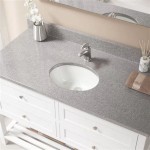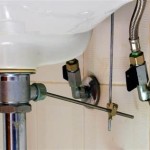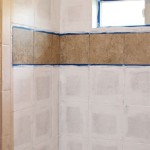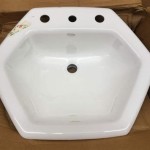How to Install a Bathroom Exhaust Fan in the Wall
Installing a bathroom exhaust fan in the wall is a relatively straightforward DIY project that can significantly improve ventilation and air quality in your bathroom. Proper ventilation helps to prevent moisture buildup, mildew growth, and unpleasant odors, creating a healthier and more comfortable environment. This article will guide you through the steps involved in installing a wall-mounted bathroom exhaust fan.
1. Planning and Preparation
Before starting the installation, it is important to carefully plan and gather the necessary tools and materials. This includes:
- Bathroom exhaust fan: Choose a fan with the appropriate CFM (cubic feet per minute) rating for your bathroom size. A larger bathroom will require a higher CFM rating.
- Electrical wire: Ensure the wire gauge matches the fan's power requirements. Consult an electrician if unsure.
- Junction box: A weatherproof junction box is needed to connect the fan's wiring.
- Wall plate: A decorative wall plate covers the fan's installation and provides a finished look.
- Screws and anchors: Secure the fan and junction box to the wall.
- Caulk: Seal any gaps around the fan and vent to prevent air leakage.
- Safety gear: Eye protection, gloves, and a respirator are recommended during the installation process.
Measure the fan's dimensions and choose a location in the wall for the installation. Ensure that the location is suitable for proper ventilation and avoids any obstructions. It is also essential to check for electrical wiring and plumbing pipes before drilling into the wall.
2. Cutting the Wall Opening
Once you have chosen the location, use a stud finder to locate the wall studs on both sides of the intended opening. This will ensure the fan is securely mounted and supported by the structural frame. Mark the opening on the wall using a pencil and measuring tape. Then, using a drywall saw, carefully cut the opening to the precise size of the fan's housing.
Be cautious while cutting to avoid damaging any electrical wiring or plumbing in the wall cavity. If you encounter any obstacles, adjust the opening accordingly or consult an electrician or plumber before proceeding.
3. Installing the Exhaust Fan
After cutting the opening, insert the fan's housing into the wall and make sure it sits flush with the surface. Secure the fan to the wall studs using screws and anchors provided in the installation kit. Connect the electrical wires to the fan's terminals according to the manufacturer's instructions. If you are not comfortable working with electrical wiring, consult a qualified electrician.
Install the junction box outside the wall opening and connect the fan's wiring to the junction box using wire connectors. Secure the junction box to the wall with screws. This step provides a safe and organized connection point for the fan's electrical wiring.
4. Connecting the Vent Pipe
Next, install the vent pipe to the fan's outlet. The vent pipe should be made of rigid or flexible material that resists moisture and can be easily connected to the fan's outlet. Use the appropriate size and type of vent pipe as recommended by the fan manufacturer. Ensure that the vent pipe is securely attached to both the fan and the vent opening outside the wall.
If the vent pipe is flexible, use clamps or screws to secure it to the wall and prevent it from sagging or becoming detached. The vent pipe should be routed to the exterior of the building, where it can safely expel the moist air from the bathroom. Install a vent cap at the exterior end of the pipe to prevent rain and debris from entering the vent system.
5. Finishing Touches
After connecting the vent pipe, place the fan's cover over the housing and secure it using the retaining clips or screws provided. Ensure that the cover sits flush with the wall and does not obstruct any vents or air flow. Finally, install the wall plate over the fan's housing to complete the installation and provide a decorative finish.
To seal any gaps around the fan and vent opening, apply a bead of caulk along the edges where the fan housing meets the wall. This will prevent air leakage and moisture from entering the wall cavity. Allow the caulk to dry completely before using the fan.

Your Complete Guide To Bathroom Exhaust Fans Universal

How To Install A Bathroom Fan Step By Guide Bob Vila

How To Bathroom Exhaust Fan Installation Unboxing

A Homeowner S Guide On Bathroom Fan Honguan

Venting A Bath Fan In Cold Climate Fine Homebuilding

How To Install An Exhaust Fan In A Wall

Bathroom Exhaust Fans The Complete Guide By Fanco

Installing An Exhaust Fan During A Bathroom Remodel Energy Vanguard

Air Sealing Bathroom And Kitchen Exhaust Fans Building America Solution Center

How To Install A Bathroom Fan Step By Guide Bob Vila
Related Posts







